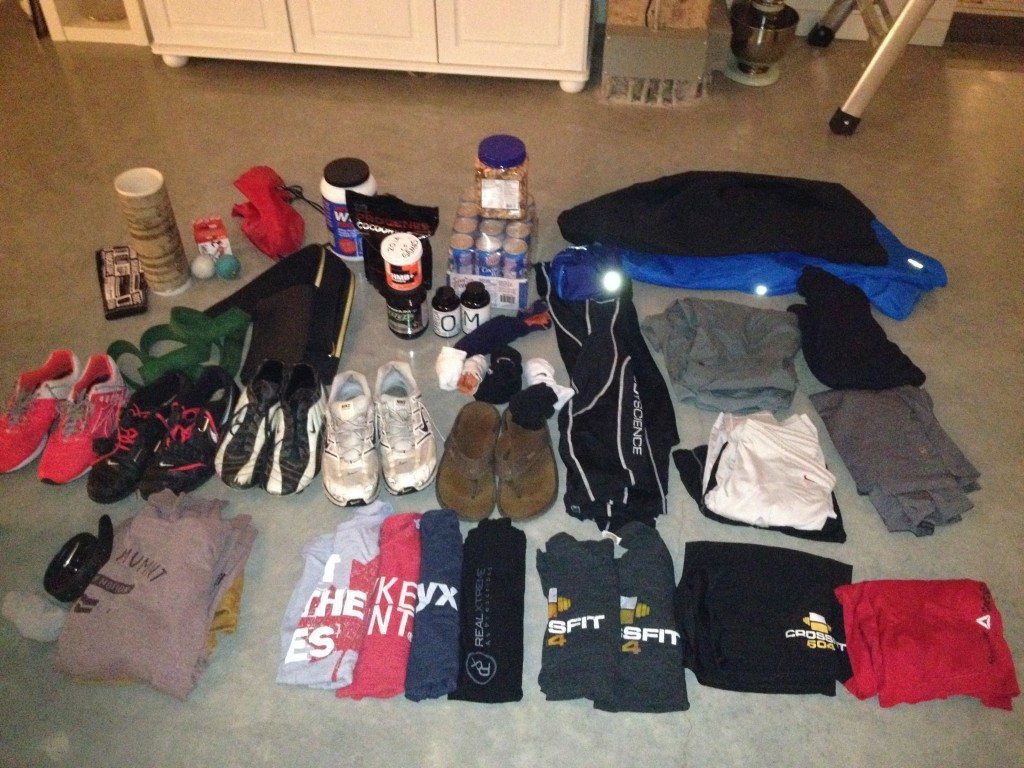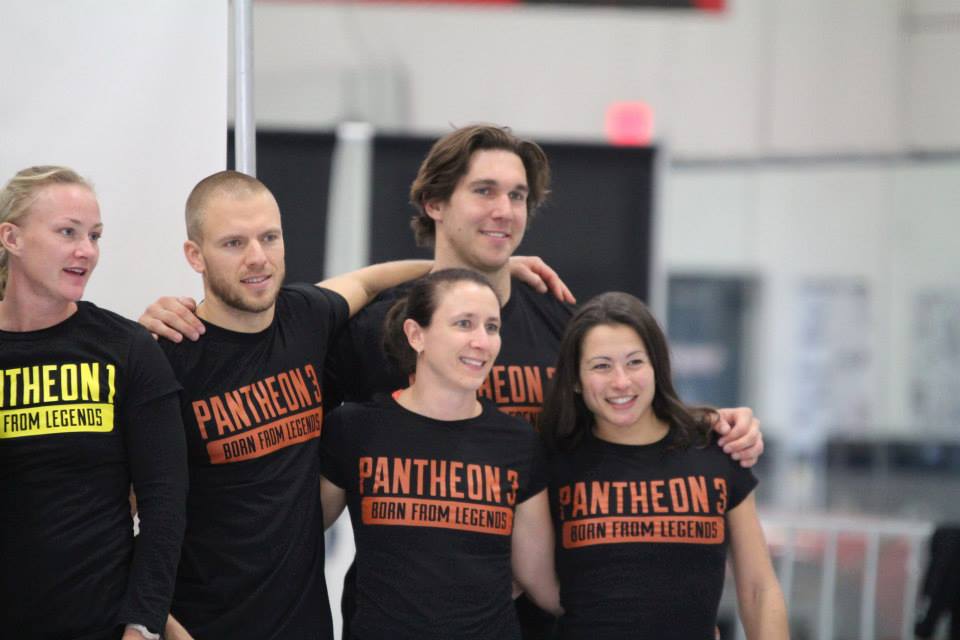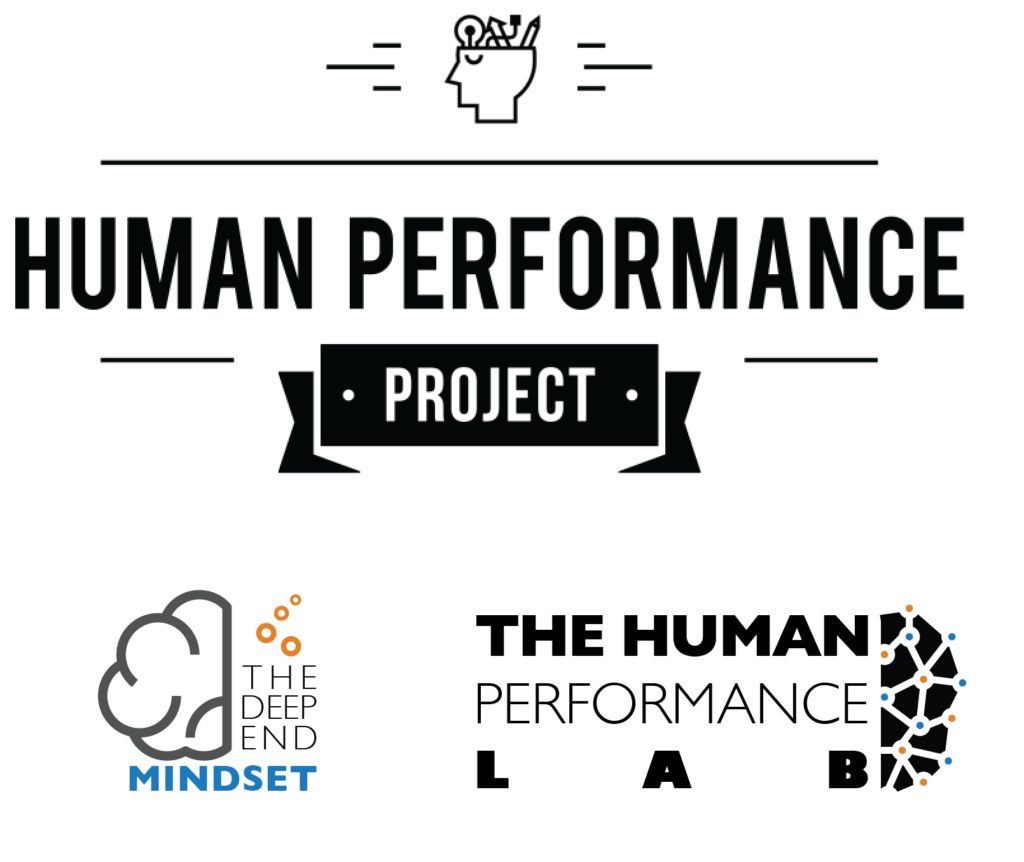War of Attrition… is when opponents attempt to win a war by wearing down its enemy to the point of collapse through continuous losses in personnel and materiel. The war will be won by the side who can maintain the greatest portion of those resources.
I’ll be the first to admit my natural strengths are numbered in the sport of Crossfit.
Standing at 6’6 and weighing 240 pounds, I have been told numerous times that competing against the smaller, more compact Crossfit athletes will always be an uphill battle.
I don’t deny this fact to be true, and it certainly has felt like an uphill battle on many occasions. But I have also realized that when you look at a Crossfit competition, and more importantly a Crossfit season, there are so many factors that rival or trump pure natural athleticism and ability.
Throughout my athletic career it has been in these intangible skills that I have chosen to focus my energy and hone my craft.
Coming off a great weekend competition where our Crossfit 604 team was up against some of the best in the Pacific Northwest I again acknowledge that a Crossfitters ability to prepare and recover in-between workouts and over the course of days is many times the difference between the pounds and seconds it takes to win. This is our war of attrition as competitive Crossfitters. Oh yea – this same equation can be extrapolated out over a season and even a career with the same effect!
I may not be a natural born Crossfit athlete, but I am a specialist in preparation and recovery.
And in a sport where 11 gruelling workouts can be shoved together in a 40 hour window, the capacity to perform at the same level of intensity and output on workout 11 as on workout 1, becomes critical.
Here are some of the keys to my preparation and recovery over the course of a Crossfit competition weekend
1) Preparation Begins Before you Arrive
For me this process is as much about preparing mentally as it is about physical preparation and recovery. I love the ritual of spending time the night before laying everything that I will need out on the floor.
Here’s some of the key ingredients from the picture above:
- Resistance bands
-
Coconut water
-
Whey protein powder
-
Blonyx HMB+ Creatine
-
Progenex Cocoon protein powder, Omega 3 and Zinc Magnesium
-
Yoga tune up balls
-
Lacrosse balls
-
Athletic tape
-
Kinesio tape
-
Vitamin C
-
Foam roller
In hindsight, here is what I would have added to make it a complete package:
-
1st aid kit including bandaids, hydrogen peroxide, polysporin, and a dressing kit.
-
Some kind of tiger balm or heat rub
-
Nail clippers
-
Some smaller resistance bands for warm up/mobility
2) Your Warmup is More Important Than Your Event
I love watching great athletes warm up. I can always tell the most serious athletes by observing the warm-up pit before an event. The focus and intentionality that oozes from these athletes is what sets them up for success before the event starts.
This isn’t as much about checking off a certain number of stretches, drills, or lifts before you compete. Instead, think about this as your personalized routine that will transition your mind and body into the rhythm of peak performance – my dad would say this is called ‘getting in the flow’.
Before every event I dedicate 1 hour to going through this warm-up that gets me in the flow. Yes, that means on a weekend where we are competing 11 separate times, I take 11 hours to focus 100% of my attention on a warm-up.
After years of finessing this process, here is what that hour looks like now:
Using Music to Get in the Mood
When that 1 hour countdown begins, one of the first things you will find me doing is putting on my headphones and getting a playlist ready. Music has always been a key anchor in my athletic performance, it allows me start focusing on the task at hand, start getting in my zone, and it also lets other people know not to disturb me (put as nicely as possible).
Visualization (10 minutes)
One could argue that visualization doesn’t actually play a role in recovery as much as in preparation, but I actually think it plays equally into both.
Follow me on this one: the point of visualization is to prepare your mind and body to perform at as near perfect/flawless state as possible. In your minds eye you can walk through any given workout movement by movement, with perfect form and mechanics. I subscribe to the belief that if you practice visualization effectively, this subconscious training and building of neuro-pathways translates to better movement and performance in real life.
If Crossfit is a war of attrition, and we increasingly lose resources the worse we move, than the ability to move more efficiently versus your opponent becomes highly valuable.
General mobility and Dynamic Stretching (10-15 minutes)
I always start my warm up with foam rolling, mobility, and dynamic movements. I also use this time to start preparing mentally for the movements and components of the workout that lie ahead. I will customize my mobility for anything specific to the workout
Workout Specific Mobility (10-15 minutes)
I’ve taken the time to visualize exactly what I’m up against in the next workout, now it’s time to prep my body so I can translate that visualized perfect movement into real life. I like to use resistance bands to stretch into the deep concerns of a squat, voodoo floss to flush out major muscle groups, and start working on speed and tempo without weight.
Working up to Workout Standards (15-20 minutes)
This is the final major component of my warm-up with the goal being working up to whatever maximum intensity the workout calls for. It may be a barbell movement, a run or row, or some kind of gymnastics work. By the end of those twenty minutes I will be sweating, full of energy, and fired up ready to go!
Re-Focus and Final Visualization (5 minutes)
In the few minutes before taking the floor you will find me bouncing around in a corner, calming my nerves and doing one final mental rehearsal. This is the calm before the storm.
It doesn’t matter whether I feel fine or like crap before these 60 minutes, by the time I take the floor my mind and body feel ready and I can move effortless into the ‘flow’.
3) You Made it Through the Workout. You’re Exhausted. Time to Cooldown.
Once the workout is over, the next battle in the war of attrition is recovery, beginning with the cooldown. While I don’t typically take an hour to cool down, the intensity and focus remain just as high as the preparation and workout itself. The cooldown will vary on the workout, but here are some consistent themes.
Fuelling: Protein and Carbs
As soon as I can after every single competition workout, I try to take protein and carbs in a liquid form. For me what I have found to work well is mixing protein powder with coconut water in a shake. Simple, quick, effective.
Keep Moving: Lactic Acid Flush
This is something that all of us have felt as Crossfitters.
The burning in your legs after a sprint row, or the pulsing in your forearms and shoulders after a high volume pullups. How you choose to deal (or not deal) with this build up of lactic acid and other inflammation is one of the biggest game changers in your ability to recovery effectively.
When lactic acid builds up after a long workout your body gets rid of it by passing it through the lymphatic system. The only problem is our lymphatic system does not have a constant engine, like the heart is to the circulatory system. It is the contraction of our muscles that is what pushes lactic acid out of an inflamed or taxed area.
One of my favorite examples of how important this is is from the 2012 Crossfit Games Rope Climb Sled Push event with Matt Chan. From watching Matt compete both at the Games and at our gym at Crossfit 604 I really think he is the real deal. A true athlete that takes all of the little things seriously.
In a workout that seemed designed with the sole intention of creating huge amounts of lactic acid build up in their legs, Matt was the only athlete who chose to jog instead of walk the trips to and from the sled. The run wasn’t any faster than a walk, but my guess is that Matt knew as he was jogging the light contractions of the muscles in his legs would cycle the lactic acid out of his system faster. Allowing him to actively recover between sets in the workout.
Here is a great clip of what I described above:
Stretch and Roll
I spend a few minutes stretching anything that feels sore or that I know was heavily taxed during the previous workout.
Clearing My Mind: Mental debrief
I always like to take a few minutes after I have cooled down and changed to think about the last workout, acknowledge any highlights and remind myself of the areas that I need to improve upon. After I have spent a few minutes reflecting, I can easily let it go and focus on the next event.
4) Nutrition is the Foundation
I have a really hard time eating throughout the day at Crossfit competitions. When I can get something down I go for fast digesting high carb foods. Fruit bars, bananas, sweet potatoes, nuts and energy bars.
When the event is over for the day the number one priority is fuel. From my years of travelling at the mercy of a team, I feel at home heading to a grocery store and stocking up on food that I know has high nutritional value and will get into my system quickly. I eat about 85% paleo, so you can imagine it is the usual lean protein, fresh fruits and vegetables, and some non-wheat pasta’s that do the best job!
5) When you’re on you’re on, when you’re off you’re off
Taking your preparation and recovery seriously can be exhausting. If you’ve been counting, so far we have an hour warm-up, a max effort workout, a 30-45 minute cool down, and then a short break until doing it all over again. Repeaingt 3-5 times daily.
I remember experiences my I was younger where I would decide to do something fun with friends in between track events or basketball games. Without fail I would always come back to the next event or game feeling drained and a little more sluggish than usual.
If Crossfit competitions for you are about having fun and relatively low stress than it’s okay to disregard this point. However, if you truly want to maximize every opportunity to perform at your best, the ability to “turn off” and fully relax in between heats or days is incredibly important.
I’ll usually spend my time in between heats hanging out with my wife Tash for a few minutes, listening to some slower music, or finding an empty corner and lying down. Zoning out and not worrying about anything going on around me. I remember an old ex-national team athlete telling me that your body recovers quicker when you are lying down versus sitting or standing, I’m not sure if this is true, but I typically adopt this position anyway!
6) Getting ready for bed: hydration, mobility, supplements, and sleep
Hydrate. Unlike during the day when I am usually overhydrated, I have to remind myself at night to keep drinking water. I try to drink 2-3 full 32 ounce water bottles in the hours before bed.
Mobilize. Sometimes I will take a few minutes to do some final foam rolling or stretching which often takes place on the hotel floor in between the beds. I’m not sure if this is more about staying mentally focused or the mobility itself but it has become a good tradition.
Supplements. To maximize recovery through the night I take a couple of supplements before going to bed. Despite weightlifting since age 9, I’ve always been apprehensive about taking creatine. It wasn’t until last year when I met Rowan, Founder and President at Blonyx who walked me through the product. I have been shocked at my strentgh gains since being on HMB+, but that is a different post! Along with Rowan’s Blonyx creatine I also take Progenex Cocoon Protein, as well as their Omega 3 and Zinc Magnesium capsules.
All of these supplements focus on joint and muscle recovery throughout the night, and it has been a great combination that finds me waking up feeling refreshed and ready to go on days 2 and 3.
So, What does Your War of Attrition Look Like?
My end goal in this sport is competing at the Crossfit World Games.
Everything I do is a direct reflection of what I believe it is going to take to accomplish this goal.
The Crossfit Games aren’t for everyone, and so as you think about your competitive Crossfit ambitions take a second to identify the goals and accomplishments you want to achieve and match your preparation and recovery approach accordingly.
Ultimately the war of attrition for any athlete is about creating effective rituals that accomplish two things:
1) to facilitate the process of moving into your state of optimum performance, getting in the flow.
2) to allow your body to achieve maximum recovery in any given period of rest.
If this post has gotten you thinking than my challenge to you is to incorporate one preparation and recovery ritual at your competition or important event. See how it feels, how you perform, and how you recover afterwards. At the end of the day, ask yourself is going the extra mile to win the war of attrition worth the effort for you?
I know it certainly has been for me!
If you found this post valuable, please share it with your communities below. If you’re a box owner, feel free to grab it to go along with your daily WOD!
Tyrell
Join me on the journey to competing at the 2014 Crossfit Games



